How to grow wheatgrass – for a superfood smoothie full of vitamins
This edible grass grows quickly and packs a punch of health benefits
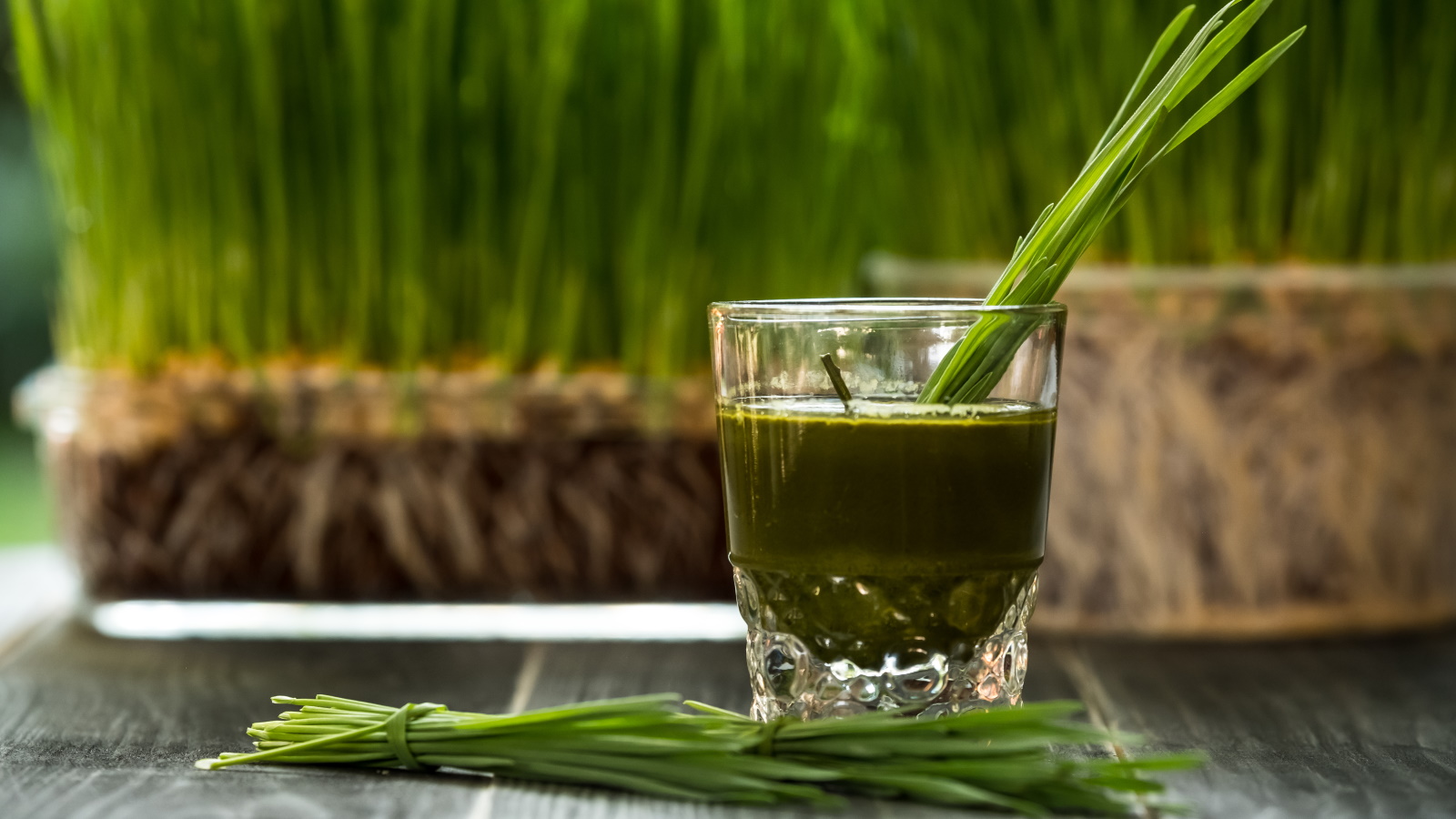

If there's one addition you should make to your kitchen garden, it's wheatgrass. Like other superfoods, including chia seeds and kale, wheatgrass is packed with vitamins and makes for an earthy ingredient in green juices and smoothies.
'Wheatgrass is simply the young grass of the wheat plant. It is now popularly known as a superfood and it is usually available in powder or ready-to-drink juice form,' says Catherine Gervacio, a nutritionist and dietitian from the E-Health Project.
'It is also known as the 'liquid sunshine' because of the high levels of chlorophyll it contains. Chlorophyll, which is the green pigment in plants, resembles the structure of hemoglobin in the human body,' she adds.
This grass, which is sometimes called cat grass, is easy to grow for an indoor herb garden all year round, but can also grow outdoors in US hardiness zones 10-12.
We've gathered expert advice on how to grow this green superfood and why it is an ingredient you should add to your diet.
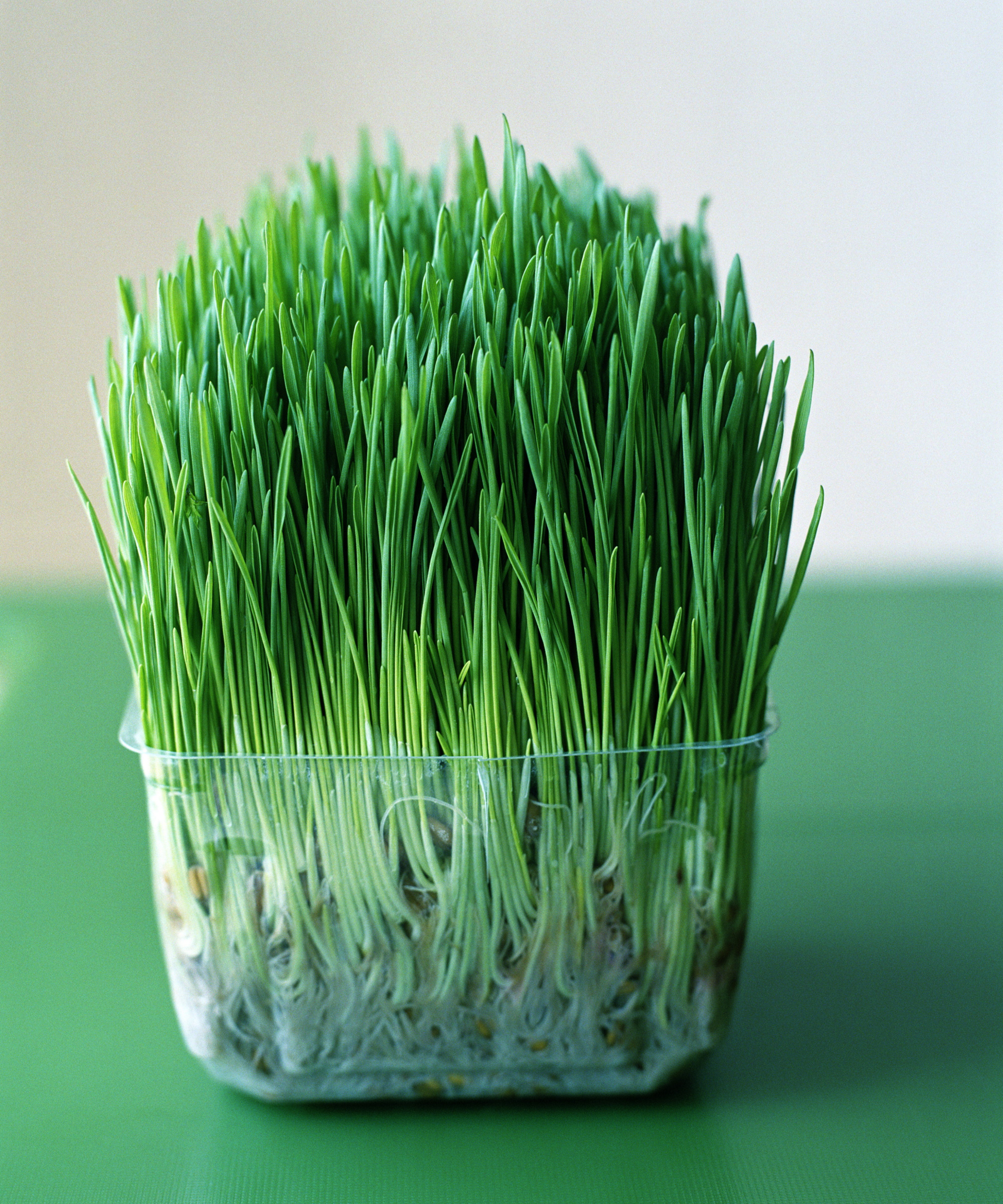

Catherine Gervacio holds a Bachelor of Science degree in nutrition and dietetics. Additionally, she is a registered nutritionist-dietitian and a certified exercise nutrition coach. Her credentials also include certification as a nutrition coach from the renowned Precision Nutrition, as well as an International Fitness Certification approved by the International Sports Sciences Association. Catherine has spent three years in clinical practice and a decade in fitness and health, collaborating with numerous individuals and companies both locally and internationally.
What are the benefits of wheatgrass?
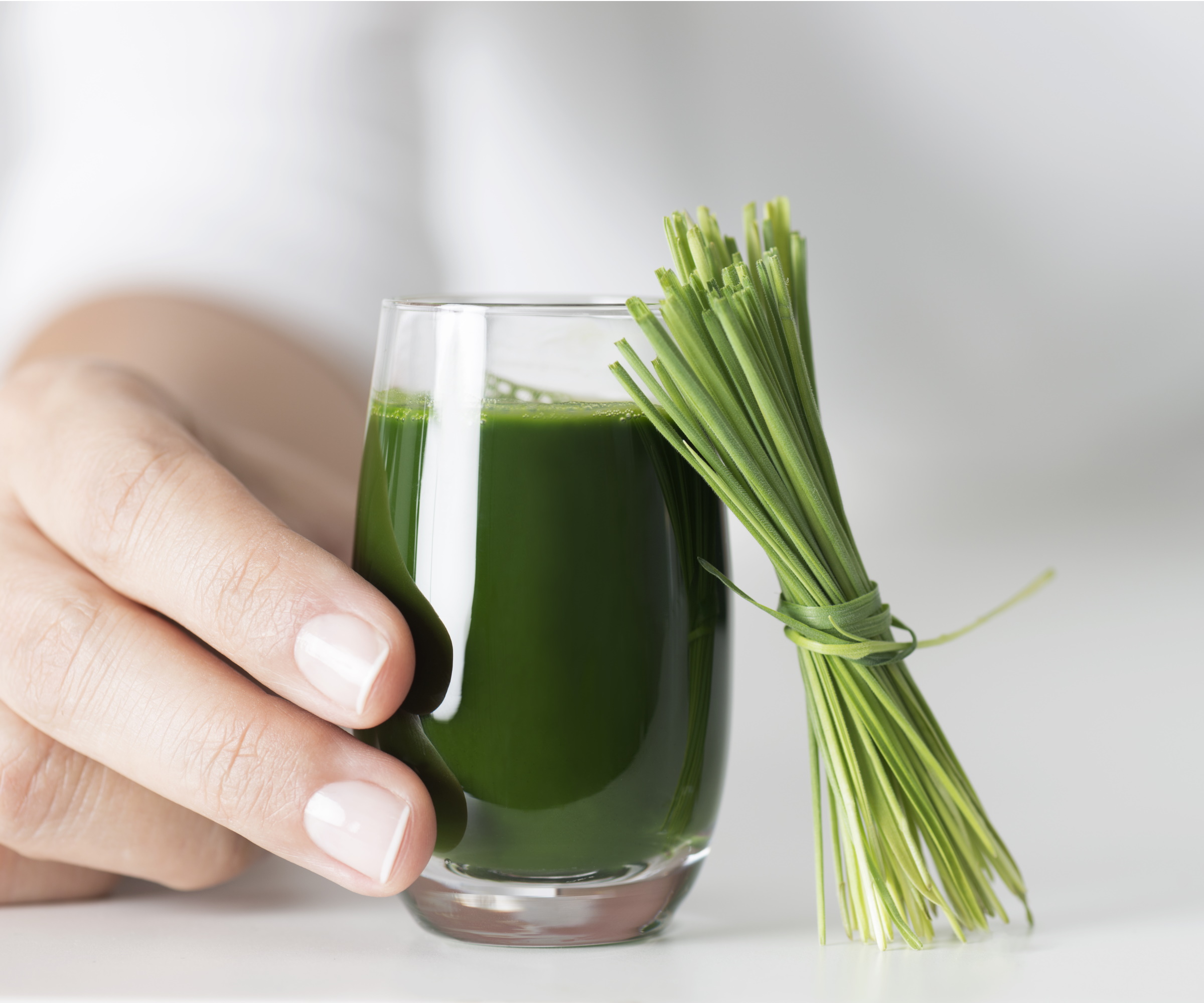
So, why are gardeners so keen to grow this humble-looking grass? The simple answer is that it can do a whole of of good for your health.
'Wheatgrass contains many nutrients including iron, calcium, magnesium and vitamins including vitamins A, C and E. It is also an excellent source of fiber, which plays an important role in digestion,' says Asmita Batajoo, a dietitian at Kaiser Permanente in Fermont.
It has antioxidant and anti-inflammatory properties, making it a popular green juice ingredient for a health kick.
'Some potential benefits include reducing cholesterol levels and inflammation, enhancing our immune system, improving blood sugar levels, and killing cancerous cells,' Asmita adds.
Although, it's important to note that more research is needed into wheatgrass to fully understand its benefits.
'High-end scientific evidence supporting benefits of wheatgrass is limited, and individual responses may vary. Before incorporating wheatgrass into your diet or taking it as a supplement, it's advisable to consult with a healthcare professional, particularly if you have any existing health conditions or concerns,' says Kristina Zalnieraite, Head of Dietetics & Medical Affairs at Guthealth.care

Clinical Dietitian at Kaiser Permanente in Fremont, CA with over eight years of experience in healthcare.

A licensed Dietitian with over 10 years of experience helping individuals regain their well being. As she pursued her career, she witnessed firsthand the global gut health crisis and has made it her mission to provide long lasting relief to those in needs.
How to grow wheatgrass
Wheatgrass is a beneficial ingredient to have in your kitchen garden and it's extremely easy and quick to grow. It can be grown from seed and successfully germinated in either water or soil. Here's how to grow it.
How to grow wheatgrass in soil
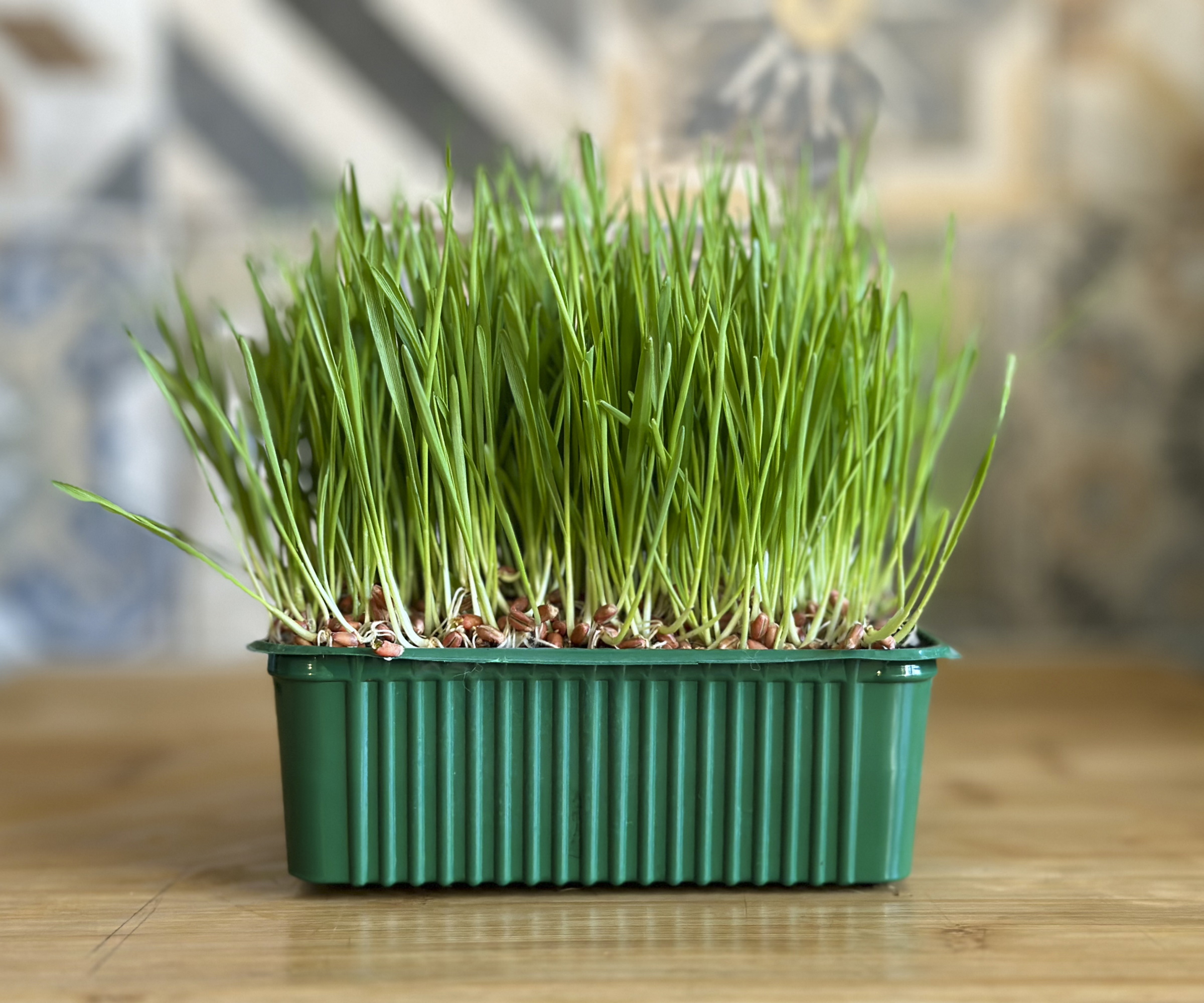
You'll need to start by preparing a seed tray, like this seed tray kit from Amazon, or a container with around two inches of potting mix. You can then sprinkle a layer of soaked wheat seeds evenly over the soil, ensuring they aren't too close together. Wheat seeds are widely available online, like this pack of wheatgrass seeds from Walmart.
Keeping the tray or container covered with a humidity dome will help create a greenhouse effect for the seeds, keeping them warm and encouraging germination. It's key at this stage to keep the soil at a consistent moisture level that is damp to the touch but not waterlogged.
'For the first few days, keep the tray in a dark place to encourage germination. A light-proof cover is essential during this phase,' says Kristina.
The seeds should germinate within a few days and you'll notice little roots appearing out of them. It's at this point you can move your wheatgrass to a bright position where it will get plenty of indirect light. Make sure to keep watering the seedlings to encourage growth.
'Water the growing wheatgrass regularly to keep the soil consistently moist, but avoid waterlogging,' Kristina adds.
Your wheatgrass will be ready to harvest in just seven to 10 days when it reaches a height of around six to eight inches. Just use clean tools, like these scissors from Walmart.
'Wheatgrass can often regrow after the initial harvest. Water and care for the remaining roots, and you may get a second harvest,' says Kristina.
How to grow wheatgrass in water
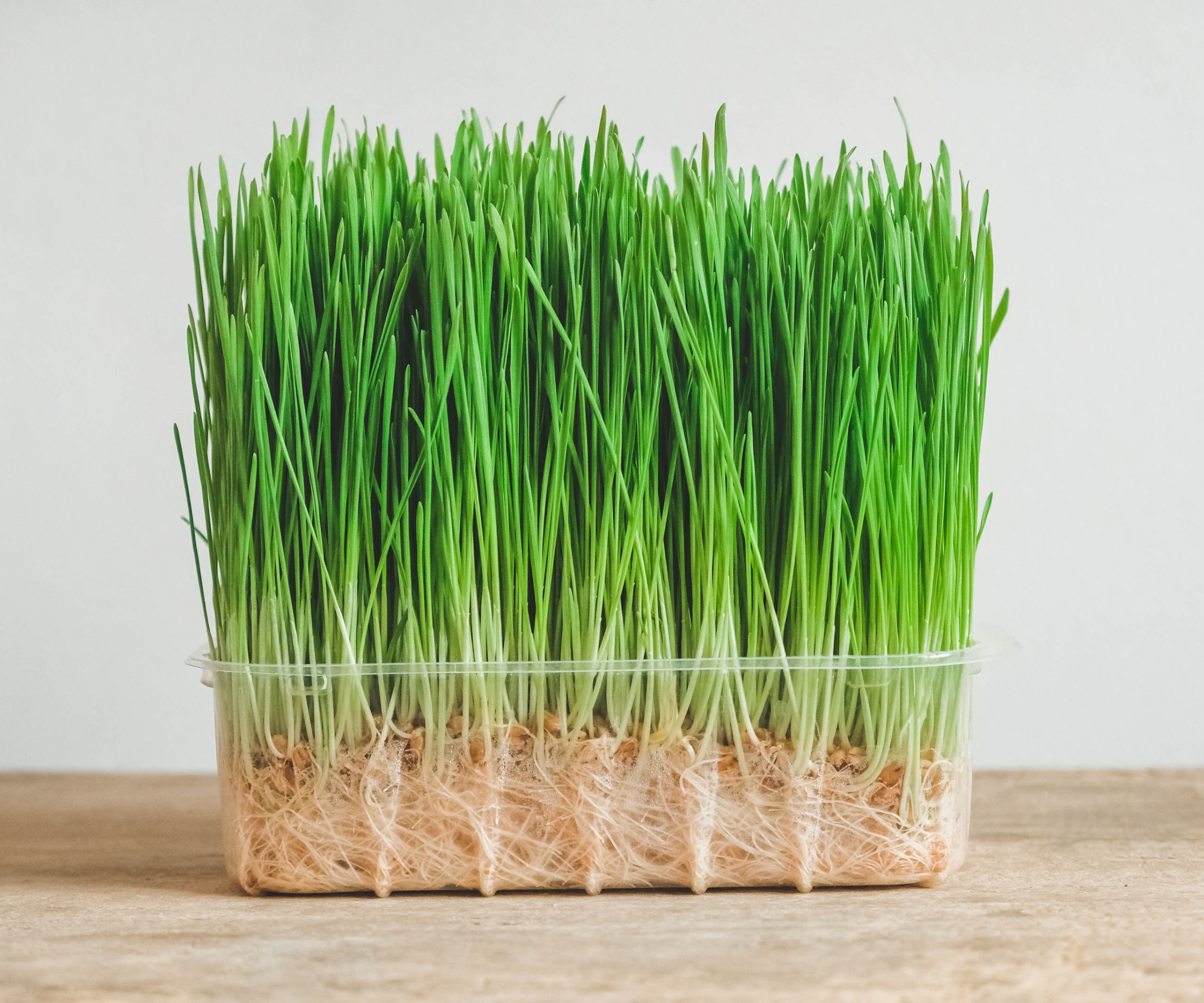
It's possible to also grow wheatgrass in water very easily. A hydroponic station is the best indoor growing system for this method because it will allow you to observe the seeds and watch them germinate.
It's as simple as pouring the seeds into a jar and soaking them in water to rinse them. You can then drain the water using a strainer and cover the seeds again with fresh, filtered water.
'Allow seeds to soak for eight to 12 hours and then drain and rinse the seeds twice a day for two to three days to give them fresh water,' says Asmita Batajoo. 'Tiny sprouts will form within a few days.'
The grass will once again be ready to harvest after around 10 days when it reaches around eight inches in height.
You can keep your wheatgrass fresh by regularly misting it, like with this plant mister from Greendigs.
FAQs
How can you use wheatgrass in the kitchen?
Wheatgrass is a versatile superfood with an earthy taste that can be used in a range of recipes. It is most commonly used in green smoothies and juices, pairing nicely with spinach, banana and pineapple, among other things. Wheatgrass juice can also be used as a salad dressing, working well with other homegrown microgreens.
What other superfoods go well with wheatgrass?
Wheatgrass is popular for the number of vitamins it provides and its antioxidant properties. Other superfoods rich in vitamins and antioxidants include berries, such as strawberries and raspberries, which can boost the flavor of a wheatgrass smoothie.
Wheatgrass is a fantastic crop to grow for a health kick. It's easy and fast-growing, so you can be sure to have homemade green smoothies in no time. If you're on the hunt for other easy superfoods to grow at home, asparagus, turmeric and blueberries are also nutritionally rich.
Design expertise in your inbox – from inspiring decorating ideas and beautiful celebrity homes to practical gardening advice and shopping round-ups.

Tenielle is a Gardens Content Editor at Homes & Gardens. She holds a qualification in MA Magazine Journalism and has over six years of journalistic experience. Before coming to Homes & Gardens, Tenielle was in the editorial department at the Royal Horticultural Society and worked on The Garden magazine. As our in-house houseplant expert, Tenielle writes on a range of solutions to houseplant problems, as well as other 'how to' guides, inspiring garden projects, and the latest gardening news. When she isn't writing, Tenielle can be found propagating her ever-growing collection of indoor plants, helping others overcome common houseplant pests and diseases, volunteering at a local gardening club, and attending gardening workshops, like a composting masterclass.